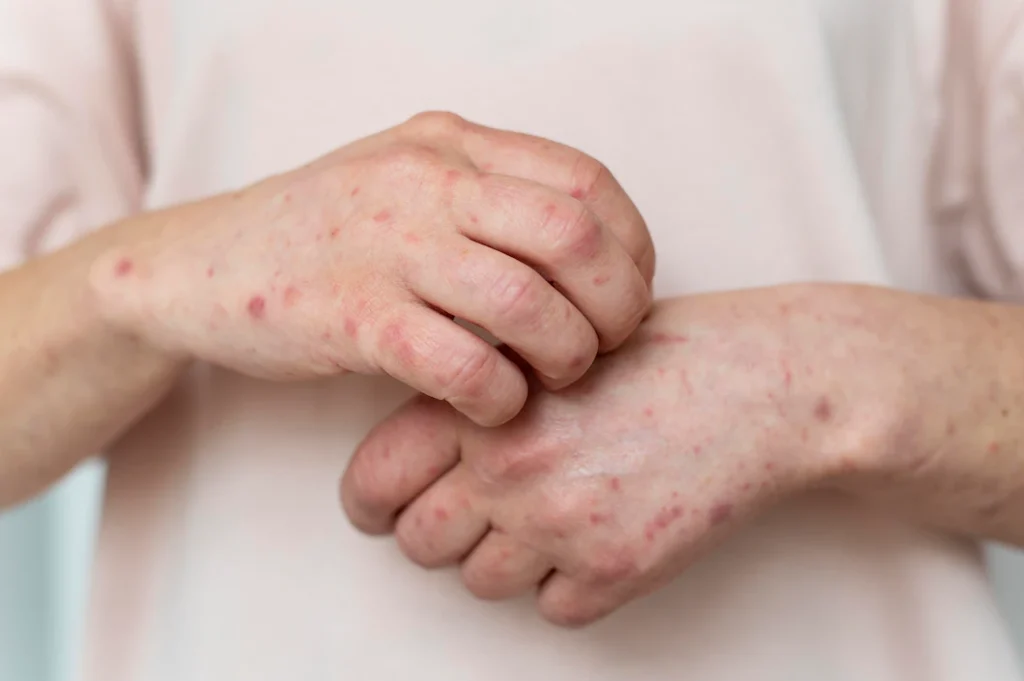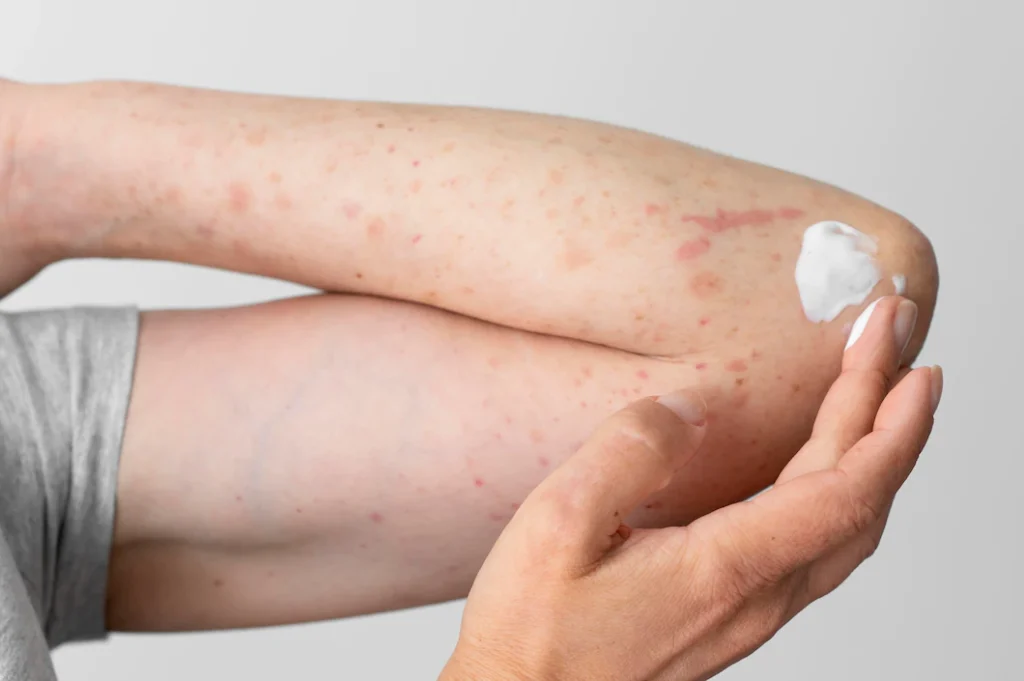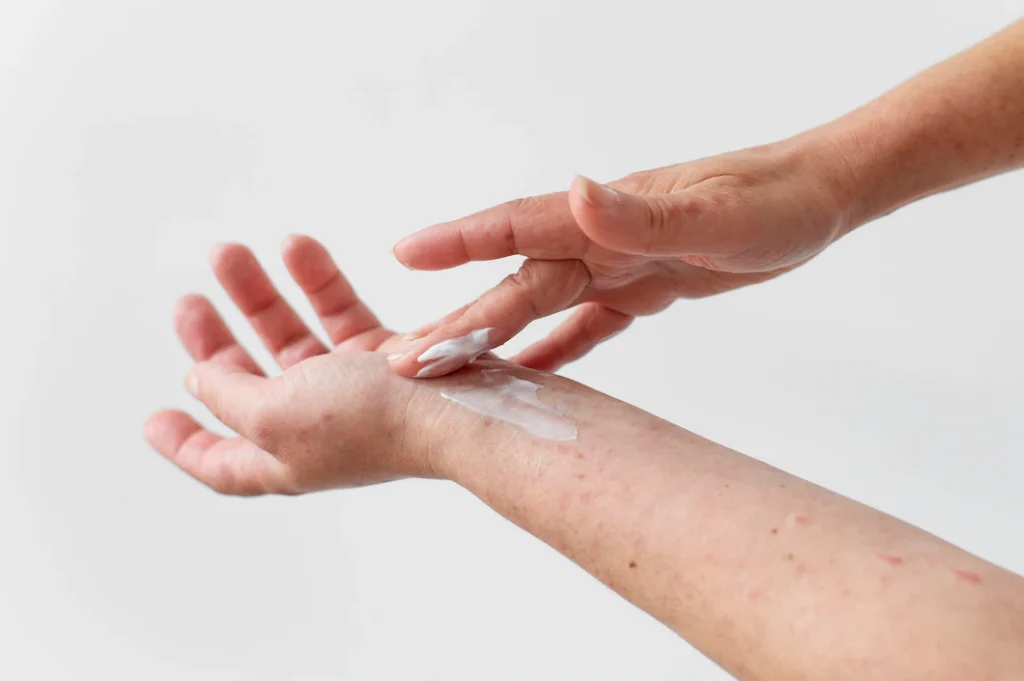
Irritated skin of color, is not about external appearance, but about internal feeling. Irritated does not feel right, it is burning and causes a lot of inconvenience in day-to-day life.
Summertime can be even more damaging to the skin and cause unwanted irritations. Read this article to find out how to treat irritated skin of color!
First thing first, let’s define skin color.
What is the skin color?

The color is rich in melanin and upon exposure to the sun, it gets darker. Color is found in all parts of the world, but predominantly in Africa, Asia, and South America.
Color has many benefits, but one of the peculiarities is susceptibility to hyperpigmentation.
How is skin irritation different for skin of color?

The main difference lies in the fact that people with color are more prone to hyperpigmentation. Hyperpigmentation is the darkening of the area, due to the overproduction of melanin.
There is a higher chance of irritation becoming hyperpigmentation, that is why it is so important to take good care of yourself and to know how to soothe it.
What is irritated skin of color?

Irritated means that the skin is inflamed, itchy, red, and sometimes even sore. Irritated skin can appear as pimples or sores, blotchy, scaly, red, and itchy or burning. Allergens, heat and a variety of medical issues (some more serious than others) can all cause these types of skin reactions. Some rashes manifest quickly while others take time to develop.
The most unpleasant thing about irritated skin is the feeling of burning, itching, and discomfort. It can be really difficult to concentrate on anything else when your skin is acting up.
What are the symptoms of irritated skin color?

Symptoms are always very individual and depend on the person’s health, lifestyle, and surroundings. The most common symptoms are:
• Burning sensation
• Itching
• Redness
• Inflammation
• Dryness
• Flaking
• Crusting
What are the causes of skin irritation?

There are many potential causes of irritation, including:
Allergies
Depending on allergies you may experience swelling, itching, and redness. Allergies can be to anything in the environment including pollen, detergents, or even the food you eat. All of the aforementioned factors can produce a variety of irritations with varying degrees of severity.
Environmental factors
By lowering the quality of our air, water, and soil, we are also lowering the quality of our skin. These environmental factors can cause irritation, inflammation, and even disease.
Dry skin is one of the most common causes of irritation. When is dry, it doesn’t have enough sebum to protect it from the environment, which can lead to all sorts of problems like inflammation, itching, and even infection.
Conditions
Conditions are one of the most popular causes of irritation. Conditions require medical advice from a dermatologist to get an accurate diagnosis and appropriate treatment.
• Contact dermatitis occurs when the skin comes into contact with an irritant, such as a chemical, jewelry, or detergent.
• Eczema is a chronic condition that causes dry, itchy
• Psoriasis is a chronic condition that causes thick, scaly patches
• Atopic dermatitis is a chronic condition that causes dry, itchy, and inflamed.
• Rosacea is a chronic condition that causes redness and inflammation
How to soothe irritated skin of color?

There are a few things you can do to soothe your irritated skin:
• Use a chamomile lotion or cream. Chamomile benefits include anti-inflammatory and soothing properties that can help to reduce irritation.
• Apply a cooling gel or cream. This can help to reduce the burning sensation associated with irritation.
• Use a soothing moisturizer. Moisturizers help to replenish the natural oils that are lost when this is irritated.
What is the best product for irritated skin of color?

Soothing airy brightening moisturizer by eadem.co is our favorite pick for daily usage, but it also handles nicely irritated skin. Initially, this product was created with the needs of color in mind, hence it has numerous soothing ingredients available in over-the-counter products, such as chamomile extract, squalane extract & black seed extract.
How to prevent skin irritation?

The best way to prevent irritation is to avoid potential triggers. If you have sensitive skin, it’s important to be extra careful when trying new products. Always test new products on a small area first, and if you experience any irritation, discontinue use immediately.
If you have a condition that irritates you, it’s important to follow your treatment plan and keep your skin well-moisturized. Wearing loose, breathable clothing can also help to reduce irritation.
There are a few other things you can do to prevent irritation:
• Avoid potential irritants. If you know that certain things tend to irritate you, try to avoid them.
• Use gentle products. Look for products that are labeled as “gentle” or “for sensitive.” These products are less likely to irritate.
• Moisturize regularly. Keeping hydrated can help to reduce the risk of irritation.
• See a dermatologist. If you’re struggling with chronic or severe irritation, see a dermatologist for treatment options.
Irritated skin color is a common issue that can be caused by several different factors. There are a few things you can do to soothe your irritated skin, including using chamomile lotions or creams, applying cooling gels or creams, and using soothing moisturizers. You can also prevent skin irritation by avoiding potential irritants, using gentle products, and moisturizing regularly. If you’re struggling with chronic or severe skin irritation, see a dermatologist for treatment options.








